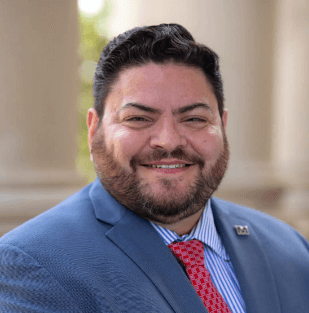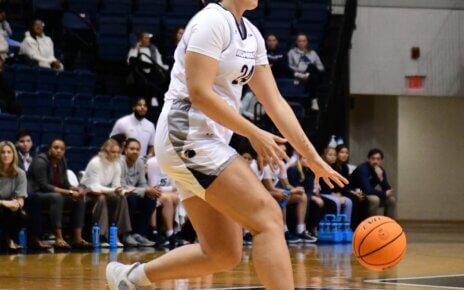David Golland, Ph.D., was recently appointed as the new Dean of the Wayne D. Murray School of Humanities and Social Sciences.
Before joining Monmouth’s campus, Golland was previously a professor of history at Governors State University in Chicago, Illinois. He served in a variety of capacities over his 12 years at the institution.
Upon ascending to his new position, Golland expressed some of his first impressions about the University. “I love Monmouth! I’ve met so many people here who share my commitment to excellence in higher education.”
Golland mentioned his ambitions for the University, as it currently houses 13 academic disciplines and four centers. He started, “I want to better integrate all of these disparate pursuits so that we can work together in serving our students and supporting their scholarship.”
The new Dean intends to direct his attention specifically to the Departments of Communication, Art and Design, and Music and Theatre. According to Golland, these departments’ pursuits are most closely aligned with one another.
“These departments will work together on a new Film Studies program in anticipation for an influx of future students seeking eventual employment at a planned Netflix headquarters at Fort Monmouth,” continued Golland.
Richard Veit, Ph.D., Associate Dean and Professor of the School of Humanities and Social Sciences, served two years as the Interim Dean for the School. Veit hopes to support Golland in their effort to build partnerships across other schools that create positive outcomes for Monmouth students.
Veit said, “I look forward to supporting him as he implements his vision for a robust and dynamic School of Humanities and Social Sciences.”
Aaron Furgason, Ph.D., Chair and Associate Professor for the Department of Communication, added, “I am excited for the opportunity to see what new academic initiatives Dean Golland has for the School of Humanities and Social Sciences.”
Golland responded, “During my time here, I hope to be remembered for my patience and thoughtfulness in helping faculty serve students…I have noticed that the faculty already goes above and beyond their normal duties to accommodate the School and its students.”
“For example, I have been impressed by Professor Patten’s introductory political science class for their creative thinking about electoral issues,” expanded Golland.
Patrick Robbins, a sophomore music industry student, believes Golland will positively contribute to the success of the Department of Music and Theatre Arts. He said, “I look forward to a bright future for not only the department but the School as a whole.”
Robbins was interested in knowing Gollands aspirations not only for the School, but the University as well. Golland answered, “I would like to see increased diversity in the student body and among faculty here at Monmouth.”
According to the US Department of Education, Monmouth’s student body is 61 perecent female and 39 percent male. Regarding race, 69 percent of students are white, 3 percent are Asian, 5 percent are African American, and 15 percent are Hispanic. One percent are international students.
Golland reiterated the dedication of the faculty and staff to facilitate the most optimal student outcomes. He highlighted a couple of faculty in particular, “Professor Jodry’s teaching style in Professional Counseling; Professor Maginn’s teaching activities in her intermediate Spanish class; and Professors Dooley and Mitchell hit the mark in their Model UN program.”



